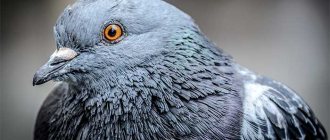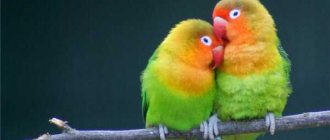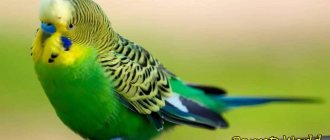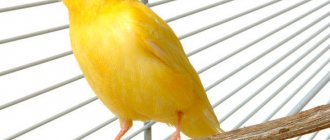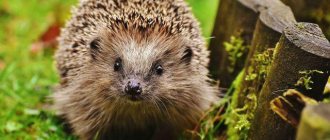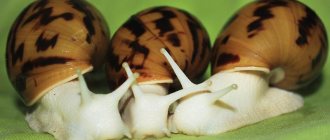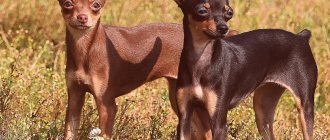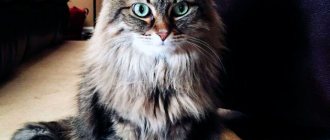- Wild animals
- >>
- Birds
The rook is a bird that brings warmth. This is what people have called it since ancient times, when it was first noticed that with the arrival of rooks, warming occurred in the northern regions. For this reason, the attitude towards rooks is warmer than towards other representatives of the corvid family. Rooks not only mark the arrival of the long-awaited spring, but are also very smart, quick-witted animals. You can verify this personally by studying these birds in more detail, their habits, lifestyle and natural qualities.
Origin of the species and description
Photo: Grach
Many people associate rooks with snowdrops, the bright sun, and the first running streams. Despite their rather gloomy appearance, these birds were able to win the favor of people. And all this is due to the fact that they are harbingers of the coming of spring. In addition, a huge number of other folk signs and beliefs are associated with rooks. With their help, they not only predict the weather forecast, but also plan some agricultural work.
Video: Rook
The rook belongs to the order of passeriformes, the family of corvids. This bird is classified as a crow based on many external and behavioral characteristics. However, there are many differences between these birds. The rook is distinguished from the ordinary crow by its slimmer build and thin and short beak. It is quite easy to recognize rooks. These are completely black birds, the size of which does not exceed forty-seven centimeters. In the sun, the color of their feathers can be purple.
Interesting fact: Most scientists are confident that the level of intelligence of the rook is almost identical to that of chimpanzees. These birds are able to use improvised objects to obtain food, just like primates.
This type of bird is characterized by resourcefulness and intelligence. They know how to get food for themselves from the most inaccessible corners. A stick, a tree branch, or a wire can help them in this matter. Birds not only use objects, but can also “improve” them to achieve their goals. For example, an animal can easily build a hook out of wire to pull a piece of bread out of a narrow bottle.
Rooks make sounds that are very similar to the sounds made by ordinary crows. However, these animals cannot be called songbirds. They have a hoarse, bassy, not entirely pleasant voice.
Diet
Rooks are practically omnivorous and have no special food requirements . After returning from wintering, the birds do not deny themselves eating last year’s grain crops and plant seeds that lay under a layer of snow all winter. In thawed areas, these creatures look for bugs and other insects that have awakened after hibernation and also eat them.
When the cultivation of the land begins for subsequent sowing, the rooks move to the arable land to find earthworms in the plowed soil. Surprisingly , these birds are absolutely calm towards people and agricultural machinery, so you can often see a line of feathered creatures walking right behind a working tractor, collecting food along the way.
In the summer, there is more food for rooks. They begin to eat various pests, finding them on the leaves of trees or crops.
In the warm season, the main part of the diet of these birds consists of various seeds:
- Peas.
- Corn.
- Sunflower.
- Weed seeds.
They also do not deny themselves eating:
- Worms.
- Various shellfish.
- Amphibians.
- Insects.
Rooks bring great benefits to summer residents, ridding gardens of pests and even small rodents.
But not all farmers treat these birds well; many try to exterminate them or at least scare them away from their property. What causes this attitude? The fact is that rooks often damage agricultural crops . They dig up fresh plantings , peck the sown seeds, eat ripening berries, melons and watermelons. They often break the branches of apple trees and other trees, and rooks cannot be praised for destroying rain devils, which plow the ground from the inside and promote the penetration of moisture directly to the roots.
Appearance and features
Photo: Rook bird
Not every modern person can distinguish a rook from an ordinary crow. These animals are really similar, and from a distance it is easy to confuse them. However, it is not difficult to recognize a rook up close.
It has characteristic external features:
- an adult rarely reaches a length of fifty centimeters. The average length is forty-seven centimeters, which is less than the size of a crow;
- the plumage has a pure black tint. Only in the sun can a bird glow purple. This is due to the fact that the bird's body secretes sebum. It lubricates the feathers, making them shiny, waterproof and dense. This feature helps these animals during flight. Thanks to sebum, rooks quickly develop speed and endure long journeys more easily;
- The beak of rooks is short, thin, strong. This is an essential feature of this species of bird, distinguishing it from other representatives of corvids. Young rooks have beaks painted a bright shade of black. But over time, the color fades and becomes gray. This is due to the fact that animals dig a lot and often in the ground;
- strong paws. The paws of this bird have tenacious claws and “panties” at the top. “Pants” are formed from small feathers;
- developed, strong muscles. The bird's musculature has high natural characteristics. About nineteen percent of the total body mass is occupied by flight muscles. This allows the animal to move deftly through the air and quickly gain speed;
- sharp, almost thorough manner of flight. Looking at the sky, these birds are easy to distinguish from others. They fly beautifully and maneuverably. Also, their feature is the ability to quickly take off from a standstill. Crows require a short run to take off. They have to flap their large wings quickly and heavily to gain height.
Classification of the species Corvus frugilegus
According to the avibase.bsc-eoc.org database, the species includes two subspecies (data from 05/01/19):
- Corvus frugilegus pastinator Gould, 1845 – Chinese ( eastern ) rook
The rook's beak is thinner and shorter than the nominal subspecies Corvus frugilegus frugilegus, the skin under the eyes is feathered, and the shine of the feathers is predominantly green. The range covers territories from Ireland through Europe and Russia to the borders of Turkey and Iran.
Photo by: Alexei Ebel, All Rights Reserved
- Corvus frugilegus frugilegus Linnaeus, 1758 – western rook
It has a larger and thicker beak, its bare space under the eyes and near the beak is larger, the shine of the feathers is predominantly blue-violet (in the eastern population it tends to acquire a green tint).
It lives mainly in eastern Asia and spreads westward to Mongolia.
The habitats of these varieties, as a rule, are not separated from each other. The only geographical division is the Altai Mountains.
Where does the rook live?
Photo: Black Rook
Rooks are very common animals. They settle wherever climatic conditions meet their requirements and suitable food is available. These birds love temperate climates, but can tolerate heat quite easily and can live in cold areas. Most of these animals prefer to live in central Eurasia. They are found everywhere from Scandinavia to the Pacific Ocean. Rooks cannot be found only in some areas of Asia.
No less large populations of rooks live in Kazakhstan, Crimea, Turkey, Georgia, Italy, France, and Turkmenistan. Birds also settle in the southern and central regions of Russia, Ukraine, Belarus, and Poland. Rooks can often be found in Afghanistan, India and even Egypt. In central Russia, birds do not stay long. When cold weather sets in, they fly away to warmer regions. Rooks cannot be found only in very cold regions with harsh winters.
Interesting fact: Rooks can easily be called animals of a colonial nature. They are distributed quite unevenly throughout their natural habitat. These birds choose only certain areas to live, often changing their habitat, migrating to different warm countries.
The largest populations of rooks can be found directly in cities, towns, and villages. These are very smart animals that prefer to live close to people - where food can always be found. They are smart and always return after wintering in warm regions at the time when the ground is plowed. During this period, birds find many beetles, larvae and other insects in the fields, rummaging in the loose soil.
Despite a certain “love” for long journeys, not all rooks are migratory. Many remain at their permanent place of residence. Typically, sedentary rooks can be found among those that live in large cities and regions where the climate in winter is not very harsh.
Differences between the common raven (Corvus corax) and the rook
The rook is often confused with the raven due to their similar body shape and color, but the birds have a number of differences.
- The first thing that catches your eye is the beak - the raven’s is black, while the rook’s is light.
- Crows are larger than rooks. He is the largest representative of his genus. The weight of a raven ranges from 800 g to 1.6 kg, and the body size with tail varies between 60-67 cm. Rooks are more miniature and grow up to 45-47 cm, and the smallest representatives can weigh only 313 g. For comparison : The largest recorded rook weighed 625 g.
- Crows lead a sedentary lifestyle, and most rooks are migratory birds.
- Rooks cry “gra”, and crows cry “kruk” (hence the Belarusian name for the crow “krumkach”).
- The raven also differs from the rook in its feeding preferences, although both birds are omnivores: the rook prefers insects, and the raven prefers carrion. Moreover, the raven’s diet changes according to the seasons: in winter, the choice falls on the carcasses of large animals (deer, sheep, roe deer, goats, cows and other species that died in the forest or in slaughterhouses); in the spring he destroys bird nests, can kill hares, frogs, lizards, birds, and catch fish; in the fall - collects grain in the fields and catches mice, visits city landfills.
On the left is a raven (Corvus corax), photo credit: Marta Boron, CC BY 2.0. On the right is a rook (Corvus frugilegus), photo credit: Andreas Trepte, CC BY-SA 2.5
- Crows are solitary by nature and stay in solitary pairs throughout the year, while rooks are highly social birds, living in large colonies and preferring to be close to people and farmland. Crows do not nest in cities (they are sometimes found in large old forest parks), but prefer forests and swamp forests.
- The raven's distribution area is more extensive. In addition to Europe, this bird nests in North America, and is also widespread in India, Syria, Iraq, Pakistan, and China, while rooks only fly to the countries of Asia and North Africa for the winter. Rooks are not represented outside Eurasia and northern Africa (except for rooks introduced into New Zealand. It is worth noting that the raven's range in Europe has declined, so the species is found unevenly across much of England, France, the Czech Republic and other Western European countries, although rooks in these areas are widespread.
- You can distinguish a raven from a rook by the way they move on the ground. Crows do not jump, as rooks often do.
- During flight, the rook flaps its wings more often.
On the left is a rook (Corvus frugilegus), photo credit: Hobbyfotowiki, CC0. On the right is a raven (Corvus corax), photo credit: Diego Deiso, CC BY-SA 4.0
What does a rook eat?
Photo: Big Rook
An important factor influencing the survival of rooks and their large population is omnivory. These birds will always find something to feast on and restore vital energy. They eat almost everything. However, the basis of their diet is still protein foods: worms, beetles, insects, and various larvae. Rooks find such food underground, actively digging in it with their short but powerful beak. These birds can be seen in whole flocks over newly plowed fields. At this time, it is easiest for animals to obtain protein food.
When searching for food in plowed fields, rooks can cause harm. Together with insects and larvae, birds eat grains that were planted by people. But this harm is significantly lower than the benefit emanating from rooks. This type of bird perfectly clears fields and agricultural land from pests, even field mice.
Interesting fact: The most severe enemy of farmers is the turtle bug. This insect destroys a huge amount of grain crops, causing significant harm. Even with a small number of turtles, the harvest is considered almost doomed. Rooks are an effective way to combat such bugs. A small flock of these birds can quickly clear a field of turtles.
The rooks’ daily diet also includes:
- mollusks, small crustaceans, crabs. Birds living in forests near ponds and rivers feed on such animals;
- small birds, their offspring. Sometimes a flock of rooks can attack the nests of small birds;
- small rodents. Rooks easily cope with field mice and small rats;
- seeds, fruits, grains, vegetables, berries, fruits;
- food waste. Rooks living in large cities prefer to feed directly on landfills and garbage dumps.
Rook at home
Keeping a rook at home is not recommended, as this bird requires space and is quite freedom-loving. However, if for some reason a rook has settled in a person’s house, then it is important to create optimal conditions for his life, which is quite difficult.
The enclosure for rooks should be as spacious as possible. The minimum size is 1 m in length and height (the bird must spread its wings freely). If the space in the house does not allow you to equip a whole enclosure, then a dog crate is suitable for this purpose. The best option is a rectangular cage with a flat roof without any “decorations”. An important condition is that it should be located away from drafts. You can also keep the rook on a glassed-in balcony.
Photo credit: HMallison, CC BY-SA 3.0
You need to clean the rook's place of residence regularly, so it is convenient to cover the bottom of the enclosure with linoleum and sprinkle with sawdust or wood cat litter. It is better to hang the feeder and drinker or place it in stands so that the bird does not knock them over and pollute them.
It is necessary to “walk” your feathered friend around the house every day, giving him a place to fly. The walk should be at least 1.5-2 hours a day. Rooks like to play with various little things, so you can offer your pet acorns, cones, brain bones, cat and dog toys, and crumpled paper. Only without particularly small parts and ropes!
It is imperative to place a stump in an enclosure, cage or room, arrange perches, perches, play corners - structures made of branches, ladders, ropes. It is desirable that the surface of the perches be rough and uneven for a kind of massage, which helps to keep the birds’ feet healthy. The domestic rook can also wear off its claws using such perches, and they will not have to be trimmed. To grind down the beak, pets are given large bones with the remains of meat.
Photo credit: nottsexminer, CC BY-SA 2.0
It is important to provide the rooks with sunbathing to avoid the development of rickets. Equipment for outdoor walks can be useful for this: harnesses, harnesses, walking cords. A good solution would be to purchase a special lamp for birds.
For corvids, it is important to adhere to a daily routine, so after sunset it is better not to disturb the bird from resting and to cover the cage with a cloth.
Rooks are quite easy to train and can become completely tame, but this will require patience. It is very important to regularly communicate with the bird, go for walks (with special accessories so that the pet does not fly away), and play together (disassemble pyramids, collect cubes, sort toys). But it’s better to hide phones and keyboards from smart and curious birds. You need to accustom the rook to commands with the help of treats. Useful commands: give it back, to the house, to me, no.
Sometimes you should leave a basin with warm water in the room for bathing. It is not recommended to specifically bathe the rook, but in warm weather you can wipe its feathers with a damp cloth.
What to feed a rook in captivity?
You can feed the rook at home:
- lean raw meat (beef, chicken, turkey, rabbit, offal);
- quail eggs;
- hard-boiled chicken eggs;
- low-fat cottage cheese;
- grated carrots, apples;
- feeding insects (crickets, cockroaches, locusts, zoobast, mealworms);
- fruits and berries (including banana, peach, pear, persimmon, apricot);
- shrimp, squid;
- gammarus, daphnia;
- baby food without salt and sugar;
- sprouted grains;
- cereals (buckwheat, brown rice, oats, pearl barley).
It is forbidden to feed:
- pasta;
- tomatoes;
- potatoes;
- bread;
- lard and fatty meat;
- sweets;
- citrus fruits (oranges, tangerines, lemons);
- milk;
- canned food;
- sausage;
- exotic fruits;
- fatty, salty, fried, spicy foods.
At the same time, there is no need to grind the products too much. It is desirable to predominate in the diet of food of animal origin. Rooks feed frequently and in small portions, so you can immediately leave them large portions of food. For drinking, you should use only clean, settled or filtered water, which should always be freely available.
Suitable treats include super-premium and holistic dog food, grain bread, melon, watermelon, and nuts. To make the feeding process interesting, you can use special devices - forages (boxes, bottles, yogurt jars, peeled bananas).
Photo credit: nottsexminer, CC BY-SA 2.0
Features of character and lifestyle
Photo: Rook in winter
Rooks are flocking birds. They prefer to spend time in open, free spaces. They can often be seen in agricultural fields and groves that are located near the river bank. These birds spend a lot of time on the edges of the forest, sometimes appearing in large city parks. Urban rooks can spend the entire day directly next to people. They do well in the company of pigeons, crows and other members of the corvid family.
These birds build their nests in very tall trees, in entire colonies. Sometimes the number of couples settling in one place can reach a thousand. If birds settle near a large city, its residents will immediately know this, because a huge colony of rooks is very noisy. Animals constantly communicate with each other, sometimes making not entirely pleasant sounds. As scientists have found, in the process of such communication, rooks can transmit very important information to each other. For example, about a place where you can make good money.
It was also experimentally discovered that every flock of rooks has a leader. This is the most important bird. Everyone listens to her and respects her. In case of danger, it is the leader who warns the flock, and it immediately leaves the unsafe place. Rooks spend all the time free from building a nest, caring for offspring and obtaining food in games. They can pass sticks to each other, play with branches, shiny objects. In this way, animals increase their level of sociability.
The character of rooks cannot be called calm. They are sociable, cheerful birds, but can sometimes be aggressive. Aggression is often shown towards its pack neighbors. They take food from the weak and can get involved in a real fierce fight.
Social structure and reproduction
Photo: Rook on a tree
With the first warmth, with the appearance of the spring sun, rooks return from warmer climes. Their mating season begins in March. At this time, the birds break into pairs and begin to actively build a home for themselves and their future babies. Construction begins closer to April. For these purposes, animals use dry grass, dog hair, branches, wet soil, clay, paper, and other available materials. Birds' nests are placed in tall trees.
Interesting fact: Rooks are “family”, loyal birds. They choose a mate for themselves for life and never part with their partner. The only exception is when the partner died unexpectedly and prematurely.
The high location of the nests is due to the fact that they are quite noticeable. The nest can reach a height of seventy centimeters, so birds have to protect it from attacks by predators and people. Birds build reliable houses, because they can use them for more than a year. Even without being in his homeland for a long time, the rook will always unmistakably find his nest, where, together with his partner, he will nurse and raise new offspring.
During the summer, a rook pair usually lays eggs once. Only in rare cases are there two clutches in a year. In one clutch the number of eggs does not exceed six. The eggs are very large and have a green-bluish tint. Both parents can incubate the eggs, but most often the female remains with the offspring. After three weeks, chicks begin to hatch. At first they are helpless, naked, so parents have to carefully care for their children.
The mother looks after the helpless chicks, and the father plays the role of food provider. When the babies fledge, the female helps the male. After about a month, the young generation of rooks is ready for their first flight, and after another month - for a completely independent life.
Natural enemies of rooks
Photo: Grach
Like any other animals, rooks often become victims of attacks by natural enemies.
Among them are the following:
- predator birds. Eagle owls, owls, golden eagles, and many other feathered predators attack rooks and almost always win the fiercest fight;
- carnivorous mammals. Foxes, wolves, bears, and smaller predators also often hunt these birds. However, it cannot be said that the hunt always ends successfully. Rooks are not easy prey for such predators. They are agile, they can take off sharply from a place and disappear into the sky;
- People. Despite the fact that rooks bring great benefits to agricultural lands, they also harm them. These birds destroy fresh crops of grain, corn, and young shoots. Such damage causes great losses to farmers. That is why people are forced to set special traps for rooks and even shoot them. However, such destruction of birds cannot be called massive;
- small parasites, fleas, bacteria. They cause significant damage to the health of birds, reducing the overall life expectancy if they do not lead to instant death.
Interesting fact: Previously, a large number of birds were caught and killed by people for completely different reasons. Rook meat was actively consumed by the poor. This dish was very popular in Germany and Ukraine.
Domestic rook and other pets
It is undesirable for the rook to live together with predators and large birds, including:
- cats;
- dogs;
- ferrets;
- large parrots;
- owls;
- hawks;
- falcons;
- large corvids, etc.
Please note that cats carry an infection that is fatal to rooks. As a result, the bird can die from a simple scratch.
But the rook itself can frighten or injure small animals and birds. These include:
- budgerigars;
- lovebirds;
- Corella parrots;
- canaries;
- grosbeaks;
- sparrows;
- crossbills;
- tits;
- blackbirds;
- rats;
- mice;
- chinchillas;
- hamsters;
- proteins;
- lizards (geckos, agamas, chameleons and others);
- other small birds, rodents and reptiles.
In any case, it is forbidden to leave animals unattended, and it is better to walk the rook and other residents of the house at different times.
Photo credit: John Haslam, CC BY 2.0
